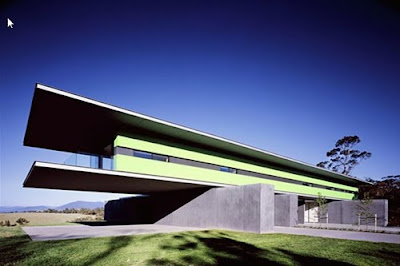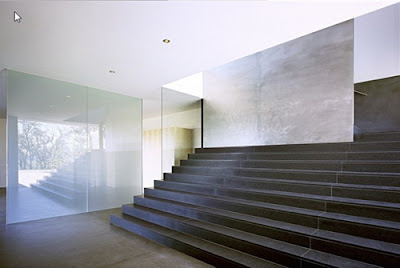A house design with butterfly roof can be found many during the American post war. Although the design already found during the post war, it’s not outdated to have a butterfly roof home design today as it bring clean lines and organic elements toward your urban development. What’s more it’s still a modern home trademark until today and still worth in investing towards this kind of home design.
Why should you invest on butterfly roof home design? By the time you learn about a butterfly roof home design, you will notice that this kind of organic home design brings more benefits to you. In the arid climate of extreme periods of drought the butterfly roof can become useful to capture rainfall and channel it into a contained space. It also provides the house with open air feel house concept and bring towards more sunlight which means you’re reducing the use of electricity and this means less fans or air conditioning usage during the day.
As we mention that this butterfly roof house can capture rainfall it means that if we break it down then we will have the water collected for watering plants, flushing toilets and even for drinking. The butterfly roof house can be very aerodynamic as it can be useful in climates with severe winds. By investing through a butterfly home design the benefits that you will also get advancements in exterior design such as window placement. In a climate which is extreme like today this organic house design is worth it and also up to date with the post modern design. Worth to invest isn’t it?


 Designed by Denton Corker Marshall, this modern concrete wilson house design is located in Yarra Valley, Victoria. Two thin rectangular plates – roof and floor – lay into a gentle rise above the vineyard stretching down to the main road. The black metal floor plate is supported by a series of parallel black pigmented concrete walls set at right angles to it. One end rests on the hillside; the other cantilevers 11 metres beyond the supporting wall. The identical roof plate floats above, separated by full-height glazing on the front and ends, and on the back by two vine green sticks laid longitudinally between the plates.
Designed by Denton Corker Marshall, this modern concrete wilson house design is located in Yarra Valley, Victoria. Two thin rectangular plates – roof and floor – lay into a gentle rise above the vineyard stretching down to the main road. The black metal floor plate is supported by a series of parallel black pigmented concrete walls set at right angles to it. One end rests on the hillside; the other cantilevers 11 metres beyond the supporting wall. The identical roof plate floats above, separated by full-height glazing on the front and ends, and on the back by two vine green sticks laid longitudinally between the plates. Each plate is 50 metres long and 11 metres wide. Their singularity and clarity is reinforced by deep setbacks – two metres on the front and rear, and five metres on the cantilevered projection – to the external wall. The roof plate is supported by internal steel columns.
Each plate is 50 metres long and 11 metres wide. Their singularity and clarity is reinforced by deep setbacks – two metres on the front and rear, and five metres on the cantilevered projection – to the external wall. The roof plate is supported by internal steel columns. The lower lever, defined by the black concrete walls, contains entry, car parking, wine cellar, study and guest bedrooms. The upper level – conceptually a single space – contains the master bedroom, second bedroom, living, dining and kitchen.
The lower lever, defined by the black concrete walls, contains entry, car parking, wine cellar, study and guest bedrooms. The upper level – conceptually a single space – contains the master bedroom, second bedroom, living, dining and kitchen. A floor-to-ceiling glass wall with sliding external doors extends the full length of the house, and opens onto an upper level terrace stepping down to an outdoor swimming pool.
A floor-to-ceiling glass wall with sliding external doors extends the full length of the house, and opens onto an upper level terrace stepping down to an outdoor swimming pool.






